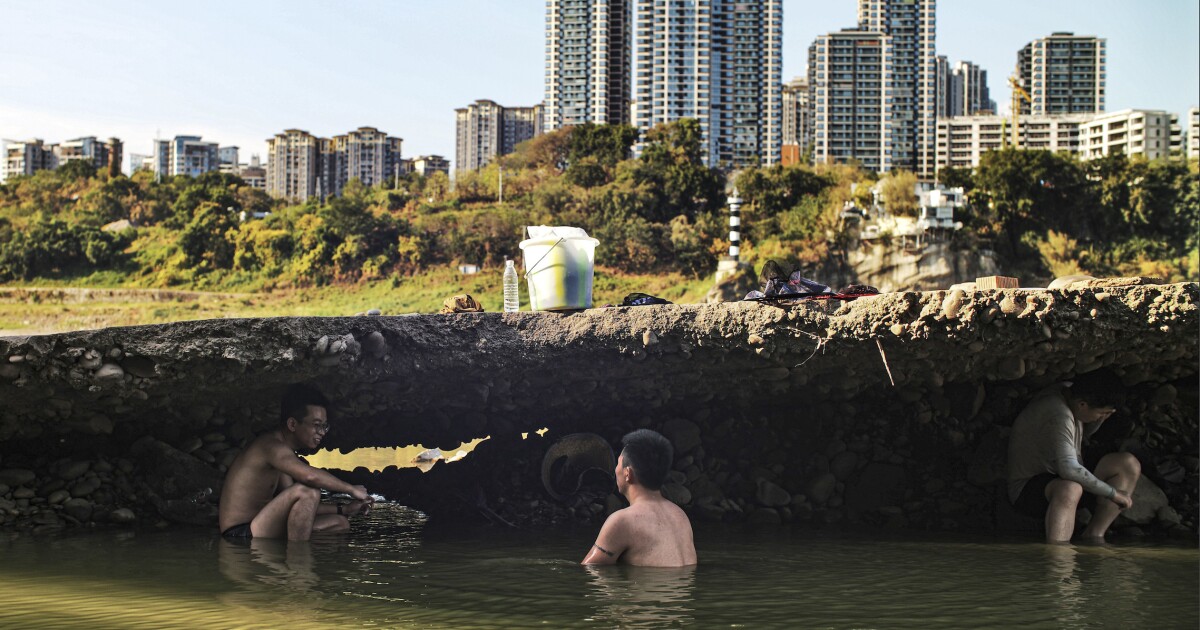

Extreme heat and drought conditions are causing water levels to plummet drastically for rivers around the world, a phenomenon that threatens to disrupt some of the world’s largest economies and upend the lives of millions.
This week, U.S. officials ordered new restrictions on the amount of water that some Western states can draw from the Colorado River, which supplies water to seven U.S. states and Mexico and helps sustain an agriculture industry valued at $15 billion annually.
Water levels in the Colorado River Basin have been dwindling for years, but officials say the crisis has been exacerbated by extreme heat, drought, and years of overuse by farmers — a confluence of problems that necessitates the stringent cuts.
Ultimately, federal officials on Wednesday ordered Arizona and Nevada to slash their water use to 79% and 92% of their normal levels, respectively. (Those restrictions will take effect next year.)
Across the world, China’s Yangtze River plummeted this week to nearly half its normal width due to triple-digit temperatures and its worst drought period on record.
Water levels are so depleted, in fact, that some reservoirs along the Yangtze have dried up completely, forcing leaders in the Sichuan and Chongqing provinces to halt operations at hundreds of factories that rely heavily on hydroelectric power. (Sichuan, for its part, receives 80% of its power from hydroelectric dams.)
Activity slowed alongside the river: Some city governments capped air conditioning use for residents, while others ordered rolling hourslong power outages. And the temporary shutdown will not be without consequence: A Chengdu-based electronics company told the Associated Press that a six-day factory outage would result in an estimated loss of $600,000 to its annual profit.
Drought conditions also wrung out waterways in Europe, with levels at Germany’s Rhine river falling so low that one of its key waypoints became virtually impassable — restricting cargo shipments along one of the country’s most bustling commercial routes and a key hub for the entire region.
There were reports of ships unloading their cargo to navigate through the depleted waters, and by Friday, one shipping cooperative told Reuters those areas became impassable for even completely empty ships. (Most barges will not ship cargo along the waterway when levels drop below 40 cm.)
The Rhine is the most important river in Western Europe for the delivery of diesel, coal, and other commodities. Analysts have warned that if it’s not navigable, utilities could end up using more gas as an alternative, a dangerous situation amid the bloc’s gas crisis.
Germany “is heavily reliant on the river to transport coal to its power stations,” especially as it deepens its reliance on alternative fossil fuels to replace Russian gas, the company Inspired Energy told Bloomberg.
Planet Labs released some satellite imagery highlighting the severe drought occuring in Europe. These two PlanetScope images, captured on 14 Aug 2021 and 13 Aug 2022, show the drastically low water level of the Rhine River near Dusseldorf, Germany. pic.twitter.com/x3wEfDqgwF
— Christiaan Triebert (@trbrtc) August 18, 2022
Though coming rainfall is expected to help normalize its levels in the days ahead, some companies were forced to make small production cuts to deal with the delay.
And others said they expect more of the same, as drought conditions are only expected to worsen in the years to come.
“Climate change is changing the baseline conditions toward a drier, gradually drier state in the West, and that means the worst-case scenario keeps getting worse,” said Park Williams, a UCLA climate hydrologist who led a study on the Western megadrought for the journal Nature Climate Change.
CLICK HERE TO READ MORE FROM THE WASHINGTON EXAMINER
“This is right in line with what people were thinking of in the 1900s as a worst-case scenario,” he added. “But today, I think we need to be even preparing for conditions in the future that are far worse than this.”






